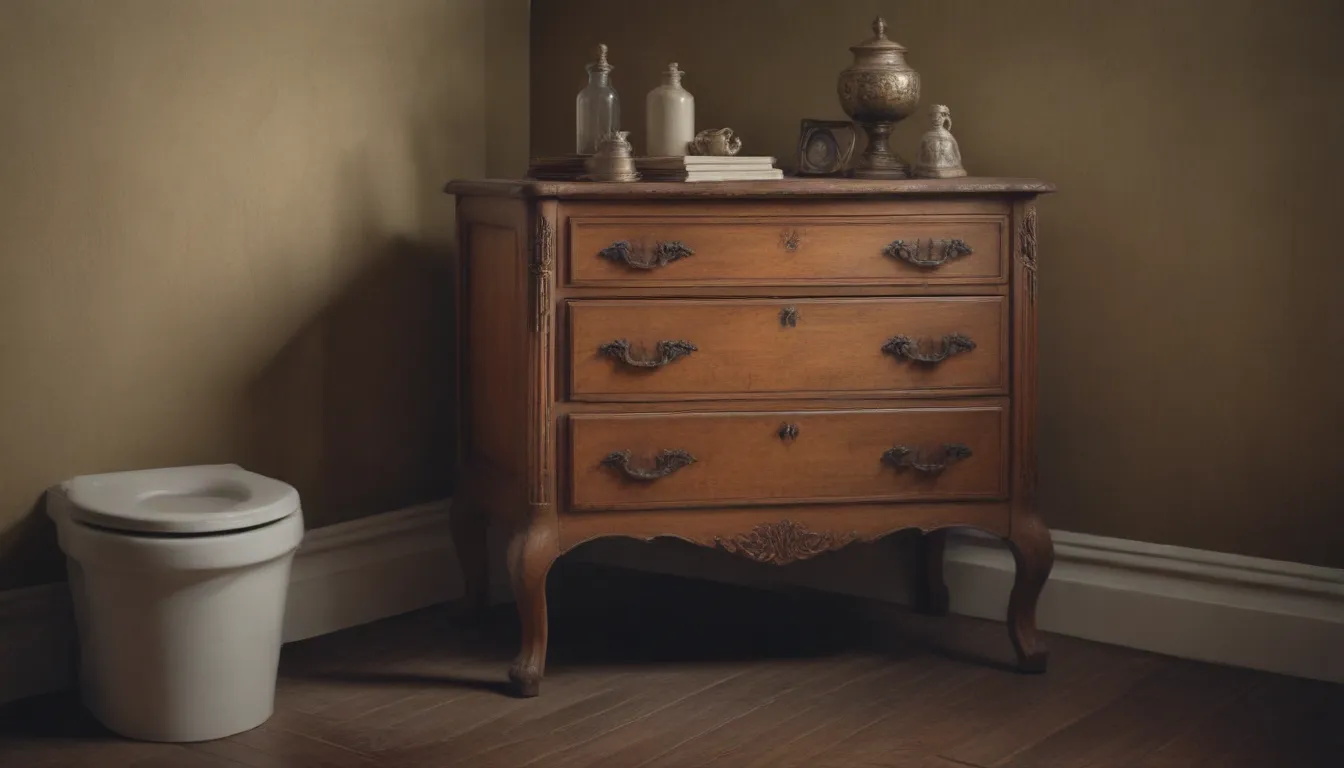A Deep Dive into the History of the Term “Commode”

If you’ve ever come across the word “commode,” you might have experienced a bit of confusion. Some people use it as a polite term for a toilet, while others associate it with an elaborate chest of drawers. But how did this single word come to have two very different meanings? Let’s explore the fascinating history behind the term “commode.”
What Exactly is a Commode?
A commode is not just a fancy term for a toilet; it also describes an intricately decorated, 18th-century French chest of drawers or low cabinet. This dual usage of the word can be attributed to the concept of semantic drift—a gradual shift in the meaning of a word as it is used in evolving contexts.
In early 18th-century France, “commode” referred to a chest of drawers or a cabinet used for storing personal items. The word originates from the French term meaning “convenient” or “suitable.” Over time, “commode” began to signify a specific type of cabinet designed to hold chamber pots. As language continued to evolve, the term expanded to encompass a piece of wooden furniture resembling a chair that accommodated the chamber pot. Eventually, “commode” came to represent the porcelain plumbing fixture that replaced the chamber pot altogether—the modern toilet.
The Exquisite Commode Cabinet
Commodes made their debut in 18th-century France, blending both aesthetics and functionality. A piece of antique furniture from this era is still referred to as a commode. A French commode typically consists of a low cabinet or chest of drawers, often adorned with elaborate decorations and supported by cabriole legs or short feet.
Early commodes boasted a bombe or convex shape with a flat back that was meant to rest against the wall. As time progressed, the design evolved into a more rectilinear form with straighter legs. These pieces were intended to be positioned against the wall, wider than they were tall, providing ample storage space and a flat surface for additional placement of items. With a marble slab top, commodes often served as a prominent display in homes, sometimes paired with mirrors or used in matching pairs within a room. What originated as a royal and aristocratic household staple eventually made its way into more modest homes, becoming an indispensable piece of furniture.
By the late 19th century, commodes took on a more subdued form, transforming into purely functional pieces commonly known as chest of drawers.
The Transition to Toilet Commodes
The association between the term “commode” and a toilet emerged with the concept of a night commode in the 19th-century Victorian era. These bedside cabinets housed chamber pots and featured a basin and pitcher on top for personal hygiene needs, resembling a miniature version of today’s master bathrooms. While lacking some of today’s modern conveniences, these chamber pot commodes provided a useful solution, especially during nighttime.
By the early 20th century, the word “commode” began to predominantly signify the porcelain toilet. Today, it remains the more commonly recognized usage of the term, with only antique furniture enthusiasts likely to own a commode that is not a bathroom fixture.
Timeline of the Commode
Although the flushing toilet was invented as early as 1592 by Sir John Harrington, widespread adoption did not occur until advancements in toilet technology and sewage systems in the mid-1800s.
- 1592: Sir John Harrington invents the first flushing toilet, but without a sewage system in place, the idea stagnates for about 300 years.
- 1775: Alexander Cummings creates the S-trap, an essential component that prevents foul-smelling sewage gases from entering the toilet.
- 1865: The City of London constructs a modern sewage system, inspiring other cities in Europe and the United States to follow suit.
- 1861: Thomas Crapper establishes his plumbing business, introducing several patents that enhance toilet functionality. He also popularized the idea of having a toilet inside the home.
- 1880s: Flushing toilets become more prevalent, aligning with the development of sewage systems.
As toilet technology advanced, features such as flushing valves, low-sitting tanks, and toilet paper rolls became standard components of the modern commode.
Conclusion
The journey of the term “commode” from an elegant piece of French furniture to a common household fixture symbolizes the fluidity of language and the evolution of societal norms. While the word may carry dual connotations, its rich history showcases the intricate interplay between language, culture, and technology.
By exploring the origins and transformations of the term “commode,” we gain valuable insights not only into the evolution of language but also into the progressive nature of human ingenuity in shaping our daily lives. Whether referring to a luxurious chest of drawers or a humble porcelain fixture, the term “commode” serves as a testament to our collective history and the ever-changing landscape of our shared language.
Next time you encounter the word “commode,” take a moment to appreciate its multifaceted journey through time and space, connecting us to a legacy of innovation and adaptation that continues to define our modern world.





